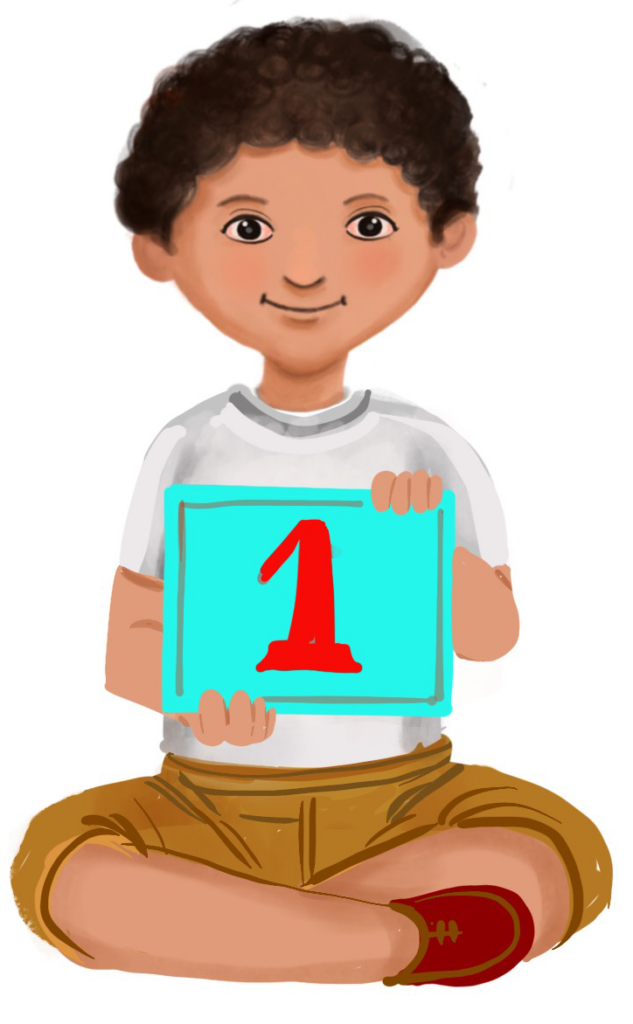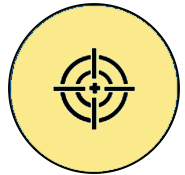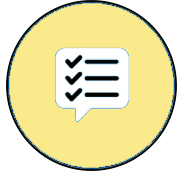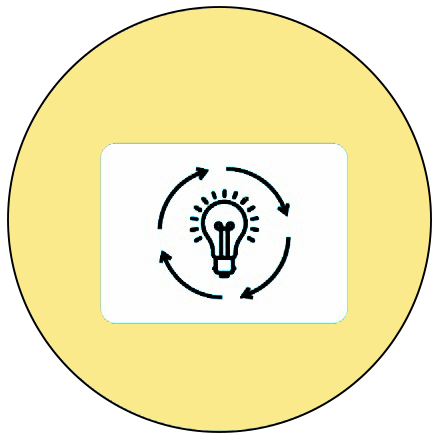
Numbers 21 to 50
Week 2
Learning Outcome
Recognises, reads, and writes Indian numerals for number names and numerals greater than 20 up to 50 using the place value concept in groups of tens and ones.
 Objective
Objective
● Students will learn to count numbers from 21 to 50.
● Students will practice writing correctly numbers from 21 to 50.
 Prerequisites
Prerequisites
● Number recognition and reading (1-20)
● Writing numbers 1 to 20
● Concept of tens (Basic understanding that 10 ones make one ten)
● Ability to count and write numbers from 1 to 20 in sequence
 Pre-teach Vocabulary
Pre-teach Vocabulary
Basic vocabulary:
● Understanding terms like “more,” “less,” “before,” “after,” and “between” about numbers.
● Children should be familiar with the terms “add, plus, equal to
Basic understanding:
● Trace: Following a line or pattern to form a number
● Sequence: The correct order of numbers
Introduction
Warm-up activity:
- Children count aloud from 1 to 20 together.
- The teacher explains that today, they will learn to count and write bigger numbers.
Visual Aid:
● Display a large number chart from 21 to 50.
Demonstration of Tens and Ones:
- The teacher prepares 10 bundles of 10 Popsicle sticks each and 10 individual sticks.
- Holds up two bundles and explains:
- “We have two groups of ten. This makes twenty.”
- Writes 20 on the board: ‘2’ for two tens, ‘0’ for no extra ones.
- Class repeats: “Twenty!”
Hands-on activity:
“Let’s all make twenty with our fingers. Hold up both hands twice.”
Progressing to Larger Numbers
- The teacher repeats for 30, 40, and 50, adding one bundle at a time.
- Moves on to numbers like 21, 32, and 45, demonstrating with bundles and loose sticks.
- Writes the number on the board, explaining tens and ones place.
The video, Number Song 21 to 50, can be played during the introduction.
Video: Number song 21 to 50 – Coming soon
ISL Video: Number song 21 to 50 – Coming soon
Activity 1: Join the Dots and Colour
Objective:
To learn how to recognise, sequence, read, and write numbers from 1 to 50 through a join-the-dots exercise. (Deleted ‘to assist children’)
Importance of the activity for children:
Helps in developing:
- Numerical Skills (Number recognition, Sequencing, Place value)
- Cognitive Skills (Memory, Pattern recognition)
- Fine Motor Skills (Holding the crayons, pencil, tracing )
- Spatial Awareness Skills (Following the shape while tracing)
- Emotional skills (sense of achievement on completion builds self-esteem)
Resources required:
- Join the dots worksheets
- Pencils
- Crayons or colored pencils
Setting for the activity:
Individual worksheet activity in the classroom.
Type of activity: Individual activity
Preparation of activity:
- Create or obtain join-the-dots worksheets featuring a simple picture with dots numbered up to 50
- Ensure each student has a worksheet, pencil, and coloring tools
Role of the teacher: Demonstrator and facilitator
Procedure:
- Distribute worksheets and materials to students.
- Explain the task: “We’re going to connect the dots in order from number 1 to number 50.
- Demonstrate how to start at 1 and draw a line to 2, 3, and so on till 50.
- Encourage students to say each number aloud as they connect it.
- Allow students to work independently, offering help as needed.
- Once the picture is complete, instruct students to colour it.
Observations:
The teacher observes the children engaged in the activity and provides help as and when required.
Conclusion:
Students recognise the Indian numerals; learn to sequence, read aloud, and write numbers from 1 to 50.
Worksheet: Join the dots – Coming soon
Worksheet: Join the dots (Enlarged) – Coming soon
Activity 2: Count the Beads and Make a Necklace!
Objective:
To help children count numbers from 21 to 50, understand grouping in tens and ones, and build number sense through hands-on exploration.
Importance of the activity for children:
Helps in developing:
- Numerical Skills (Number recognition, Sequencing, Place value)
- Cognitive Skills (Memory, Visual organisation, logical thinking)
- Fine Motor Skills (Grip and eye hand coordination)
- Spatial Awareness Skills (Following the shape while tracing)
- Emotional skills (sense of achievement on completion builds self-esteem)
Resources required:
- Colourful beads (at least 50 per child)
- Small boxes or cups (to group 10 beads in each)
- String or yarn (cut to appropriate length)
- Number cards (21–50)
- Place value mat (optional, showing “Tens” and “Ones”)
Setting for the activity:
Children can sit in pairs or groups on the mat or at the desk with the required materials.
Type of activity: Pair or group activity
Preparation of activity:
Flash cards, beads, and empty cups with labels as tens and ones are to be provided for the children.
Role of the teacher: Demonstrator and facilitator
Procedure:
Step 1: Forming the Number with Beads
- Give each child a number card (e.g., 36).
- Ask them to count and group the beads into sets of 10 using small boxes or cups. For example, for 36, they will:
- Fill 3 boxes with 10 beads each (3 tens = 30)
- Count 6 more beads separately (6 ones)
Step 2: String the Beads
- After grouping and counting the beads, children now thread the beads onto a string.
- Use one colour for tens beads and another for ones beads to highlight place value.
- As they thread, they count aloud: “10, 20, 30, 31, 32, 33…”
 Notes to teacher:
Notes to teacher:
A nice tray or egg tray can also be used in place of paper cups for the children to count and keep the beads.
Observation:
The teacher
- Observe if the child is able to group beads correctly in sets of ten and count using ones to form numbers from 21 to 50.
- Note if the child understands the concept of “tens and ones” (e.g., 34 = 3 tens + 4 ones).
- Observe the child’s fine motor coordination while picking, grouping, and threading beads.
Conclusion:
Children learn to count numbers from 21 to 50 and group the given objects in tens and ones.
Video: Count the beads and make a necklace! – Coming soon
ISL Video: Count the beads and make a necklace! – Coming soon
Activity 3: Trace the Numbers
Objective:
To trace numbers from 20 to 50 to improve their number recognition, sequencing, and writing abilities.
Importance of the activity for children:
Helps in developing:
- Numerical Skills (Number recognition, Sequencing, Place value)
- Cognitive Skills (Memory, Pattern recognition, logical thinking)
- Fine Motor Skills (Holding the crayons, pencil, tracing )
- Spatial Awareness Skills (Following the shape while tracing)
- Emotional skills (sense of achievement on completion builds self-esteem)
Resources required:
- Worksheets with traceable numbers
- Pencils or crayons
- Large number chart 20-50 for reference
- Whiteboard and markers
Setting for the activity:
Classroom desks where children can work individually on the worksheet.
Type of activity: Individual activity
Preparation of activity:
Prepare a worksheet where numbers are dotted for tracing from 20 to 50.
Role of the teacher: Demonstrator and facilitator
Procedure:
- Introduce the activity using the large number chart.
- Demonstrate number tracing on the whiteboard.
- Distribute worksheets to students.
- Guide students through the first few examples as a class.
- Allow students to work independently on the remaining numbers.
- Encourage students to use the number chart if they need help.
After tracing, ask students to colour the numbers using crayons or markers. They can also decorate the numbers with stickers or draw pictures around them related to the numbers (e.g., drawing 20 stars for the number 20).
- Encourage creativity and fun!
- Provide blank paper for students to practice writing the numbers 20 to 50 independently. They can refer back to their traced numbers as a guide.
- Ask them to write their favourite number from the range and draw something that represents that number
- Allow students to share their favourite number and drawing with the class. They can explain why they chose that number or what they drew.
- Consider displaying their completed worksheets and drawings on a bulletin board to celebrate their work.
- Ask questions such as
- Which number did you like tracing the most? Why?
- Did you enjoy decorating the numbers? What did you draw?
- How do you feel about writing numbers now?
Observation:
The teacher observes the tracing ability of the children and assists them if required.
Conclusion:
Children learn to recognise, trace, and write numbers from 21 to 50.
Worksheet: Trace the numbers – Coming soon
Worksheet: Trace the numbers (Enlarged) – Coming soon
Home Activity
Assign a number from 21 to 50 to each child. Tell them to identify any object in their house environment and tell the same the next day in the class and write the same on the board for everyone to see. For example the child assigned 32 can say, I counted 32 leaves in my house, 50 can say, I counted 50 rice grains etc.
Cross-Curricular Connection:
- Art and Craft:
Children can draw and cut pictures of objects as instructed by the teacher. Example: ice cream cone, flower, bird, etc. Each child can be given a number starting from 21. Once done, the cut pictures can be stuck on the felt board in sequence along with the number.
Assessment:
The teacher can give the practice worksheet to the children, which can be followed by an assessment worksheet.
Worksheet: Practice Worksheet – Numbers 21 to 50 – Coming soon
Worksheet: Practice Worksheet – Numbers 21 to 50 (Enlarged) – Coming soon
Worksheet: Assessment Worksheet – Numbers 21 to 50 – Coming soon
Worksheet: Assessment Worksheet – Numbers 21 to 50 (Enlarged) – Coming soon
Check list for teacher:
| Activity | Yes | No | Sometimes |
| Children can: | |||
| Read and tell numbers from 20 to 50 | |||
| Write numbers from 20 to 50 | |||
| Understand tens and ones | |||
| Form and write numbers from 20 to 50 using the concepts of tens and ones | |||
| Focus on the activity | |||
| Complete the activity in the given time | |||
| Do the activity independently | |||
| Express verbally and through actions, expressions, or gestures |
Teacher Resource Document – Coming soon
| Source and Attribution of images: All images used in the above Assets and Aids are originally created. |
| This digital material has been developed by the Sri Sathya Sai Vidya Vahini Inclusive Education Project, a unit of Sri Sathya Sai Central Trust, Prasanthi Nilayam, as a collaborative offering in the service of our nation. |